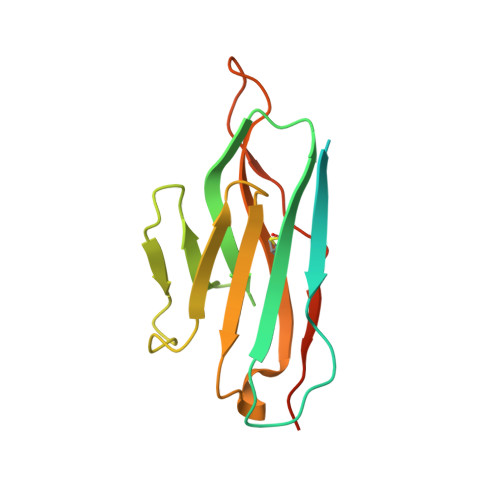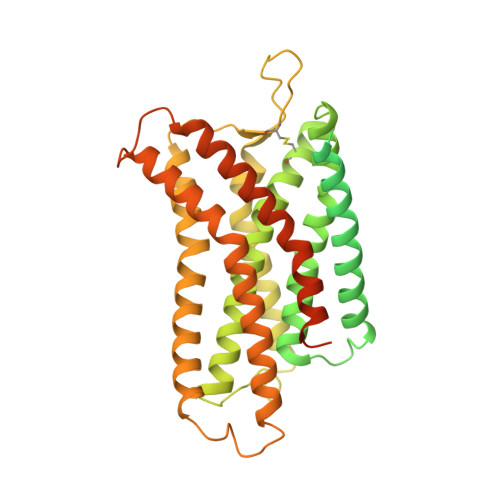Structural insights into the activation and inhibition of CXC chemokine receptor 3.
Jiao, H., Pang, B., Liu, A., Chen, Q., Pan, Q., Wang, X., Xu, Y., Chiang, Y.C., Ren, R., Hu, H.(2024) Nat Struct Mol Biol 31: 610-620
- PubMed: 38177682
- DOI: https://doi.org/10.1038/s41594-023-01175-5
- Primary Citation of Related Structures:
8HNK, 8HNL, 8HNM, 8HNN - PubMed Abstract:
The chemotaxis of CD4 + type 1 helper cells and CD8 + cytotoxic lymphocytes, guided by interferon-inducible CXC chemokine 9-11 (CXCL9-11) and CXC chemokine receptor 3 (CXCR3), plays a critical role in type 1 immunity. Here we determined the structures of human CXCR3-DNG i complexes activated by chemokine CXCL11, peptidomimetic agonist PS372424 and biaryl-type agonist VUF11222, and the structure of inactive CXCR3 bound to noncompetitive antagonist SCH546738. Structural analysis revealed that PS372424 shares a similar orthosteric binding pocket to the N terminus of CXCL11, while VUF11222 buries deeper and activates the receptor in a distinct manner. We showed an allosteric binding site between TM5 and TM6, accommodating SCH546738 in the inactive CXCR3. SCH546738 may restrain the receptor at an inactive state by preventing the repacking of TM5 and TM6. By revealing the binding patterns and the pharmacological properties of the four modulators, we present the activation mechanisms of CXCR3 and provide insights for future drug development.
Organizational Affiliation:
Kobilka Institute of Innovative Drug Discovery, School of Medicine, The Chinese University of Hong Kong, Shenzhen, Shenzhen, China.

















